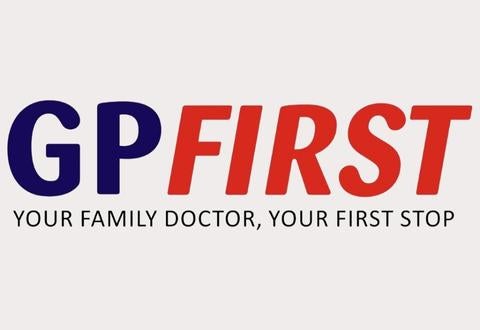Changi General Hospital will NEVER ask you to transfer money over a call. If in doubt, call the 24/7 ScamShield helpline at 1799, or visit the ScamShield website at www.scamshield.gov.sg.
Diagnostic discoveries
Radiography provides high-quality imaging that supports various medical and surgical disciplines at Changi General Hospital (CGH).
There are times when the healthcare team needs to identify certain problems in a patient’s body that are not visible to the naked eye. In order to make an accurate diagnosis, radiography intervention is required. In conjunction with World Radiography Day — which marks the anniversary of the discovery of X-rays in 1895 — CGH’s Department of Radiography shares more about its Magnetic Resonance Imaging (MRI) and Nuclear Medicine (NM) capabilities, and what patients can expect when they go for these procedures.
Magnetic Resonance Imaging
What is an MRI scan?
An MRI scan is a medical imaging technique that uses a strong magnetic field and low-energy radiofrequency waves to produce detailed images of three different planes of any part within the human body. “With the ability to differentiate between fat, muscle, water and other soft tissues, it is commonly used to scan the brain, spine, heart, liver, pancreas and other skeletal structures for the diagnosis of diseases and/or the evaluation of soft tissues for internal damage. It is also useful for monitoring lesions in organs, reducing the need for certain invasive methods or exploratory procedures,” says CGH Senior Radiographer Ashikin Binte Osman.

An MRI scan is a safe and pain-free medical imaging technique that helps in medical evaluations and the diagnosis of diseases.
MRI scans help to diagnose various conditions. They include MRI of the:
- Liver: to diagnose tumours for liver cancer in patients with Hepatitis B;
- Spine: to check for slipped discs or the pinching of nerves that cause back pain;
- Knee: to check for soft tissue or ligament injuries; and
- Brain: to diagnose stroke and dementia

MRI scans can produce detailed images of the brain.
What happens during an MRI scan?

CGH’s radiographers carry out
detailed checks for prohibited
items such as jewellery,
digital devices and hearing
aids before the MRI scan to
ensure patients’ safety.
During the scan, one has to remain still on the MRI table throughout the procedure, which typically ranges from 30 minutes to an hour. This helps to ensure that the images obtained are clear. MRI scans are painless. Loud repetitive noises from the MRI machine are to be expected, but headphones and/or earplugs will be provided. A contrast (dye) injection may be necessary for some MRI scans. The dye highlights blood vessels, organs and certain soft tissues, making them show up more clearly in the scans. The radiographer will monitor the patient throughout the MRI scan to ensure that they are well-cared for and comfortable.
Is MRI safe?
An MRI is generally safe. As part of patient safety, a radiographer will carry out checks on any implants and pacemakers that a patient may have and assess if it is safe to perform the scan.
- MRI Safe: the implant is considered to be safe for an MRI scan and does not contain any ferromagnetic materials, for example, a lens implant in the eye.
- MRI Conditional: the implant may be safe for an MRI scan under specific scanning conditions, for example, a titanium implant in the spine.
- MRI Unsafe: the implant is unsafe in the MRI environment, for example, a continuous glucose monitoring device.
Before entering the MRI scan room, the cardiac physiologist will check the patient’s pacemaker and switch it to the MRI-safe mode.
Nuclear Medicine

NM is a safe medical imaging procedure that enables cell activity and biological processes to be visualised and measured.
What is Nuclear Medicine?
NM, a medical imaging procedure, involves the introduction of a small amount of radioactive medication into the body to diagnose and determine the severity of a variety of diseases, including cancers, heart disease, diseases relating to the gastrointestinal tract, endocrine organs, neurological conditions and other abnormalities within the body. While conventional imaging (e.g. Computed Tomography, MRI, ultrasound and X-ray) produces anatomical images of the body, NM enables cell activity and biological processes to be visualised and measured. “As NM detects molecular activity within the body, diseases can be identified at their earliest stage, allowing for early medical intervention,” says CGH Radiographer Low Zuxian.
How does NM work?
During the scan, the patient has to lie still on the NM table to avoid any motion blurring of the generated images. Depending on the type of scan, it may take up to an hour. The radioactive medication can be injected into the body, inhaled or swallowed. It travels to the targeted area and gives off radiation that is detected by the camera. This in turn produces images that display the body’s physiological processes, such as the rate of metabolism. A higher metabolic rate increases the uptake of the radioactive medication, which may indicate possibilities of abnormalities.
Is NM safe?
NM is a safe way of diagnosing medical conditions without the need for surgery or invasive diagnostic tests. Patients will only receive a small amount of the radiopharmaceutical, which is just enough to provide sufficient diagnostic information. The amount of radiation is low, and is not expected to have any harmful effects on the patient and people around them. In fact, the amount of radiation from most NM procedures is comparable to, or less than, that of diagnostic X-rays.

NM imaging scans can display patients’ physiologies, such as heart scans (left) and bone scans (right), helping to detect diseases at an early stage.
Stay Healthy With
© 2025 SingHealth Group. All Rights Reserved.


















